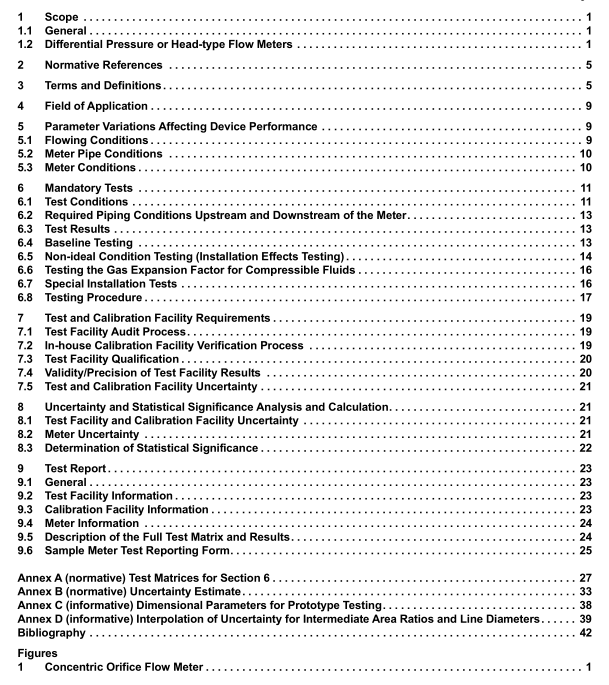API MPMS 22.2 pdf download

API MPMS 22.2 pdf download Manual of Petroleum Measurement Standards Chapter 22—Testing Protocol Section 2—Differential Pressure Flow Measurement Devices
4 Field of Application The application for this testing protocol is limited to devices that are used in the measurement of hydrocarbon fluids in the petroleum, energy, and petrochemical industries. In addition, this protocol is limited to single phase, steady-state, Newtonian fluids operating within the turbulent flow regime (Reynolds number greater than 4,000). This protocol only applies to meters where the discharge coefficient for each individual meter is determined through flow calibration. This protocol does not apply to meters where the manufacturer has developed a discharge coefficient or discharge coefficient equation that applies to all meters of the same design, size, or area ratio. The results of tests on representative meters for discharge coefficient uncertainty, installation effects, gas expansion factor, and the method of determining the discharge coefficient can be applied to all meters of the same make, model, size, and area ratio as the representative meters tested. The discharge coefficient for individual meters of the same make and model can vary significantly. The use of a generalized discharge coefficient for a given make and model in lieu of an individually flow calibrated discharge coefficient is discouraged. The application of this testing protocol assumes that the installation of the meter in the field conforms to the test conditions used in this protocol and that the discharge coefficient unique to each meter and the gas expansion factor have been programmed into the flow computer or measurement system.
5 Parameter Variations Affecting Device Performance The performance of differential pressure flow measurement devices can be affected by numerous parameters, including the following.
5.1 Flowing Conditions
— Reynolds number—The discharge coefficient for most differential meters is sensitive to the Reynolds number. The effect of Reynolds number on discharge coefficient is part of the mandatory tests (6.8.2). It may be necessary to fit the calibration data with either a curve fit or linearization techniques to meet the user’s uncertainty criteria (see 8.2).
— Density—The differential pressure across the meter is directly related to the density of the fluid at flowing conditions. Changes in fluid density will affect device performance through this direct relationship, as well as through changes in Reynolds number and the discharge coefficient. Fluid density during testing is controlled by the test facility and variations in fluid density is accounted for in the test facility uncertainty determination (see Annex B.4.6).
— Differential pressure to static pressure ratio (DP/P f
—The gas expansion factor required for meters measuring gas is typically a function of the ratio of the differential pressure to the static pressure. For meters designed to measure gas flow, this protocol requires a gas expansion factor to be provided (see 6.8.4). In addition, tests are required to be run at a high DP/P f and a low DP/P f to test the gas expansion factor (see 6.6).
— Pressure—Some meters may be sensitive to flowing pressure due to changes in dimensions caused by stress on the meter, or due to other causes. Although pressure effect testing is not part of this protocol, the manufacturer shall specify the maximum allowable pressure that will result in a discharge coefficient that is statistically similar to the stated discharge coefficient. The manufacturer shall also provide documentation, upon request of the user, as to how this was derived through testing.
— Temperature—Some meters may be sensitive to flowing temperature due to changes in dimensions caused by changes in the modulus of elasticity of the meter material, or due to other causes. Although temperature effect testing is not part of this protocol, the manufacturer shall specify the maximum allowable temperature that will result in a discharge coefficient that is statistically similar to the stated discharge coefficient. The manufacturer shall also provide documentation, upon request of the user, as to how this was derived through testing.









